Amazing Animals #22 The Fruit Bats
These are one of my favourite groups of animals mainly due to the fact that many of them bear a striking resemblance in appearance to my favourite animals which are foxes, only with the added bonus of wings.
The scientific name for their order is Chiroptera, of all Mammalian orders Chiroptera is the second largest by number of individual species (Rodents are first) with roughly 1240 discovered species.
Despite being so numerous they are rarely seen in detail, they are incredibly elusive creatures and most sightings of them are only brief encounters as they fly at low altitudes against the backdrop of the night sky.
Description and Distribution
Traditionally it was observed that there were two suborders of Chiroptera, Megachiroptera - which consisted of species within the family group Pteropodidae, and Microchiroptera - which consisted of all separate family groups of echo-locating Bats.
However in the previous three decades molecular genetic data has led to the proposal that there are two new suborder classifications which should replace the previous two, these are Yinpterochiroptera - comprised of all Pteropodidae species as well as five Microbat families which can be explored here, and Yangochiroptera - comprised of all previous Microbat family groups except from the aforementioned five.
Aside from the new suborder classification, fruit Bats are still only found within the family group Pteropodidae, which contains seven sub-families, these are:
Nyctimeninae (Tube-nosed fruit Bats)
Cynopterinae (Pygmy fruit Bats, Short-nosed fruit Bats, Dayak fruit Bats, Musky fruit Bats)
Harpiyonycterinae (Naked-backed fruit Bats)
Macroglossinae (Long-tongued fruit Bats, Long-tailed fruit Bats, Blossom Bats)
Pteropidnae (Flying Foxes)
Rousettinae (Dawn fruit Bats)
Epomophorinae (Epauletted fruit Bats)
In total there are thought to be 186 extant species of fruit Bat alive today, it will come as no surprise that these 186-species come in a variety of shapes, sizes and appearances.
Megabats on average are considerably larger than Microbats though there are of course exceptions, the common Blossom Bat native to Australia grows to just 2.4 inches from head to tail and weighs just 21 grams, whereas the Giant golden-crowned flying Fox native to the Philippines can weigh up to 1200 grams and may achieve a wingspan of up to 5-6 ft.
A noticeable difference between Megabats and Microbats is that the general appearance of Megabats is quite similar throughout the sub-families, common observable traits of Megabats includes an elongated snout that bares resemblance to species of Canid, large wings in comparison to their overall body size, comparably small ears to their Microbat cousins, large eyes, the addition of a claw on the second digit and, with the exception of a few species, the complete absence of a visible tail.
To compare species within the Megabat suborder we can observe the similarities between the previously mentioned common Blossom Bat (Synconycteris australis) and the Giant golden-crowned flying Fox (Acerdon jubatus).

Colouration aside, the two species do not look too dissimilar from one and other despite being separated by a size difference of over 5 feet, they both possess a similar facial structure, are covered in short fur across their bodies and their eyes and ears appear to be in proportion to their overall size, the main difference occurs in their Dentition.
The giant golden-crowned flying Fox feeds almost entirely on fruits and leaves, as such it possesses an impressive set of teeth that are capable of piercing and ripping through vegetation, the common Blossom Bat on the other hand feeds entirely on Nectar and instead relies on a long brush-like tongue to gather nectar from flowering plants.
There are distinct exceptions that do display differences in appearance beyond colour, size and minor facial alterations, most notably the tube-nosed fruit Bats, these Bats have the same common traits observable in most Megabats though they also possess a key feature more akin to the variance observed in Microbats.
Tube-nosed fruit Bats are easily distinguished by the presence of their tubular nostrils, their nostrils are frequently 4-8mm in length and protrude outwards above the mouth, very little research has been conducted in to the purpose or function of this trait, though it is speculated that it may offer the Bats a more acute sense of smell, a sense that is already amplified throughout the Megabat suborder.
It is widely believed that both Megabats and Microbats evolved from a single common ancestor that was already capable of flight, this common ancestor is known simply as Chiroptera that existed roughly 60 million years ago, it is thought the divergence of the two suborders occurred roughly 40-50 million years ago.
Unless you live in an area that is both temperate and offers an abundance of naturally occurring fruits, you are unlikely to ever encounter a fruit bat in the wild, due to their dietary needs they are almost entirely limited to the tropical and sub-tropical regions of Africa, India, Asia and Australia.
Fruit Bats can however be found in temperate areas of Western Europe as released captive specimens have managed to form invasive populations, the most notable of which can be found throughout the Canary Islands, the islands offer the perfect environment for growing fruits such as Bananas and Figs, this has led to a species of giant fruit Bat thriving in the wild.
Like most Bat species they are predominantly nocturnal animals that opt to roost during the warmest periods of the day, larger species that have no natural predators may choose to roost in the open, simply hanging from tree branches that offer very little in the way of cover, whereas smaller species will likely need to hide, and they will frequently roost in rock crevices, cave systems and within dense shrubbery.
Diet and Behaviour
The key difference between Megabats and Microbats can be observed in their dietary requirements, Microbats feed predominantly on Insects, Arthropods and even small Mammals, whereas Megabats have an herbivorous diet that consists of fruits, vegetables and plant matter.
As previously mentioned different fruit Bats have different dietary requirements, the two common types of fruit Bat are Frugivores, and Nectivores.
The Frugivores have a varied diet that consists mostly of fruits, but may also contain leaves, flowers and vegetables, these bats have an impressive set of teeth that includes a prominent set of fangs that most people think of when they think of Bats.
Their fangs are an important asset as the fruit Bat will require them to break open certain fruits that may have a hard outer shell or husk, they also serve another purpose that allows a key behavioural detail to occur, most frugivorous fruit Bats do not eat their meals where they find them, instead they opt to fly back to their roosting site with fruit before consuming it, their large fangs offer a wider grip and allows the Bat to carry fruits that are often larger than their own head.
Behind their fangs are an enlarged set of molars and pre-molars, these teeth play an important role as they are required to crush and break down fruit / plant matter, some fruit Bats also have bony plates located on the roof of their mouth, when consuming fruit they crush the fruit in to the bony plates which separates the nutritious juice from the fibres, once separated they spit out the fibres which are not easily digested within their system.
Nectivores on the other hand are not as reliant on their teeth as their Frugivore cousins, most Nectivorous Bats have a more pronounced elongated snout and their mouth contains much smaller teeth, the iconic fangs as well as molars and pre-molars are still present however they are not always visible under brief observation.
Their main tool for feeding is an incredibly long and narrow tongue, the tongue of the Nectivorous Bats has evolved to handle most of their feeding requirements, they will search for suitable flowers and plants to feed from and once they’ve located them they proceed to perch and extend their tongue deep in to the plant, their tongue is coated in sticky bristles which will pick up pollen and nectar upon contact.
Nectivores play a similar role to pollinating insects and highly beneficial to the ecosystem they reside in, with each flower visited they pick up pollen that they will then inadvertently pass on to the next flower that they visit, this mutualistic relationship is known as Chiropterophily.
The vast majority of fruit Bat species are entirely nocturnal feeders that search for food using their highly tuned sense of smell, their search for food can often extend to covering distances of up to 30 miles in a single night, as such they are highly efficient flyers that use their large wingspan and low body weight to cover long distances without expending large volumes of energy.
Most fruit Bats choose to search for food in solitude, though when roosting they are seen to be highly sociable animals with some species of flying fox numbering in their hundreds and even thousands in a single large tree, sites such as these are referred to as Roost trees, when roosting fruit Bats can often be observed resting and grooming each other.
Fruit Bats communicate with one and other through a combination of various physical signals such as head movements and bites, they also communicate through a range of vocalisations and clicks, once they have integrated in to a colony they will likely remain part of that same colony for the rest of their lives and they observably form close bonds with individual Bats within the colony, these bonds are strongest between dominant males and subordinate females.
Large colonies will lead to subgroups within the colony that often display a clear dominance hierarchy, frequently the sub group will consist of one dominant male and up to eight females, the male will mate with all of them at least once during a breeding season.
The gestation period of most fruit Bats takes between four and six months, once the offspring are born they will be entirely reliant on their mothers care for at least the first six weeks of their lives, during this time the young Bat will cling to its mother as she feeds as normal, after a period of six weeks the juvenile will gain the ability to fly which enables them to gather food for themselves, at this point the juvenile will often opt to leave its parents to join a group of other juveniles which may eventually result in a permanent sub-colony, fruit Bats never give birth to more than one Bat at a time.
It should be noted that fruit Bats do not mate during times of food scarcity or habitat loss, this serves as an important preservation tool as it prevents the Bats from exacerbating issues further that may have a negative impact on their survival as a species.
Blind as a Bat
A key difference between Megabats and Microbats aside from their dietary needs, is their method of hunting/gathering food, ask any person how Bats hunt and you’ll likely receive the answer of echolocation, this is true for Microbats, but entirely false for Megabats, in fact, only one species of Megabat has the ability of echolocation and that is the Egyptian fruit Bat which uses high pitched tongue clicks to navigate through cave systems.
Megabats are thought to have evolved away from the use of echolocation as their size increased, this theory is based around the fact that most echolocating Bats are far smaller than most fruit Bats, as echolocation and flight are both energy expensive tasks a complex coupling of the two tasks is required and this is thought to be more viable in smaller species, as such it is now believed that a larger body size disrupts the ability to couple echolocation and flight efficiently, thus fruit Bats have developed other less energy demanding tools for sourcing food, namely their eyesight.
At this point I should state that various fruit Bat species do possess an inefficient form of echolocation, they are able to produce clicking sounds from their wings that become more frequent in dark environments, researchers tested the aptitude of this echolocation by placing several fruit Bats in a dark room filled with obstacles, the end result saw the Bats continuously crashing open impact with the obstacles despite clicking their wings, this has led researchers to believe that their echolocation abilities are poor at best and likely offer little benefit in day to day life.
Fruit Bats gather food using a combination of their keen sense of smell, and their eyesight, as you can see their eyes are considerably larger than most Microbat species, for a long-time, researchers thought that fruit Bats eyes only contained rods which allow for improved night vision but offer very little use in daylight, upon investigation their eyes have been found to also possess cones which allow for vision in sunlight.
Most species of fruit Bat are colour blind as their retinas contain only green cones, however in flying Fox species they have both blue and green cones within their retinas, this gives them dichromatic colour vision in the same sense that our own eyes do.
So, whilst the adage of “blind as a bat” may ring true for many species, it is completely false for fruit Bats who are reliant on their vision to survive, it is likely an adaptation that has arisen from the absence of echolocation, however echolocation serves very little purpose for identifying stationary fruits and flowers.
Content Sources
More Amazing Animals
If you Enjoyed this article feel free to check out some of my previous editions of Amazing animals.
- The African Elephant
- The African Lion
- The Arctic Fox
- The Peregrine Falcon
- The Komodo Dragon
- The Great White Shark
- The Hyena
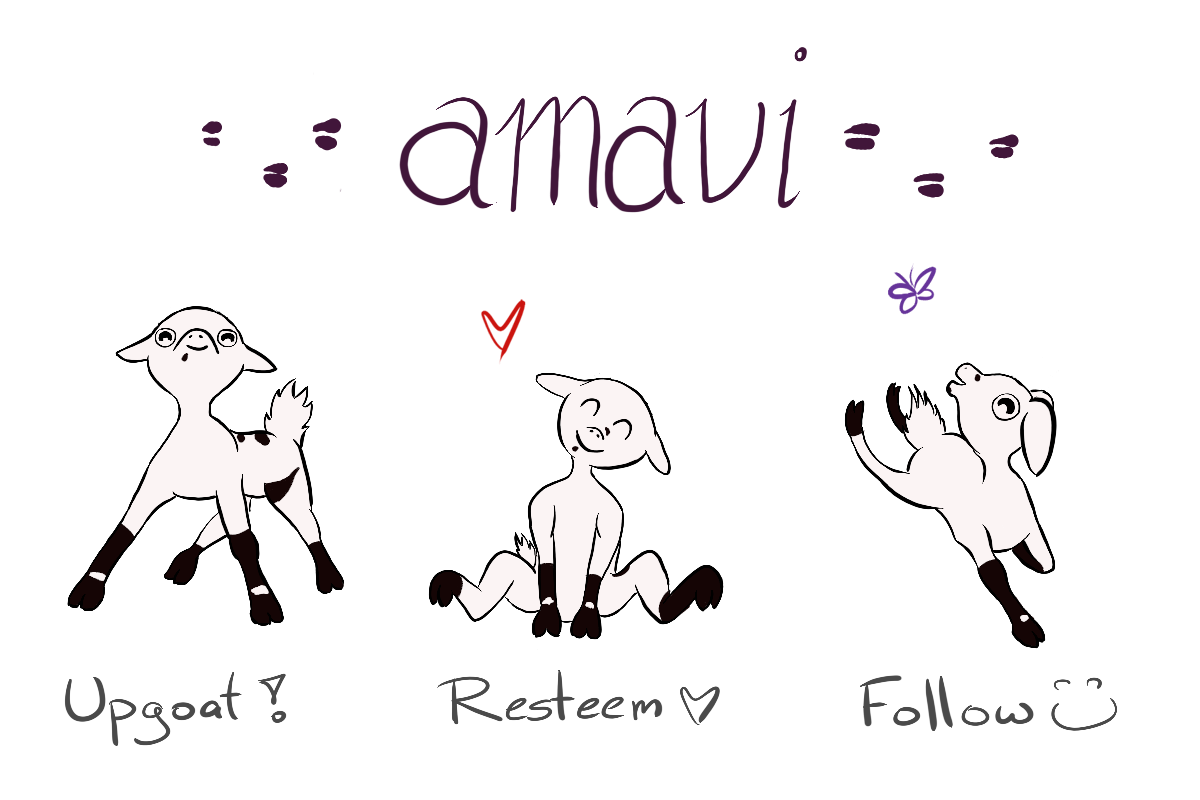
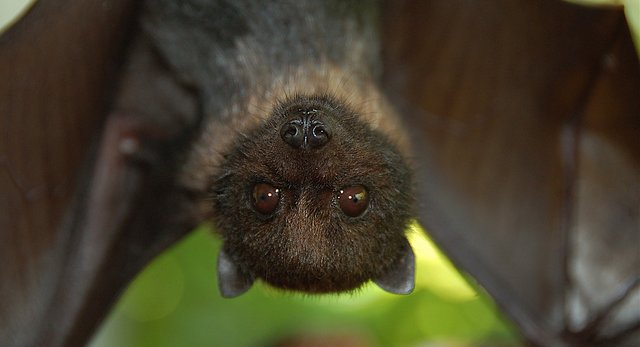
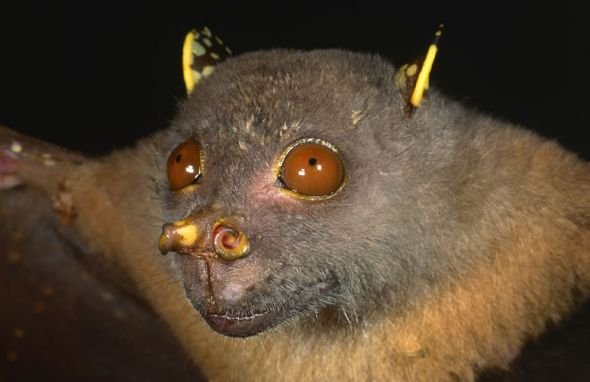
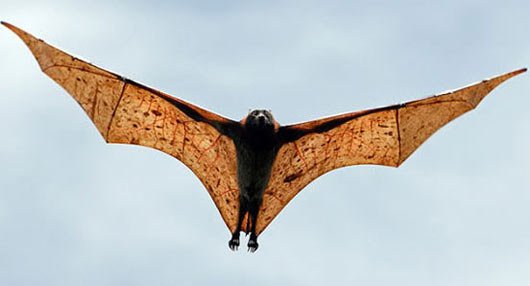
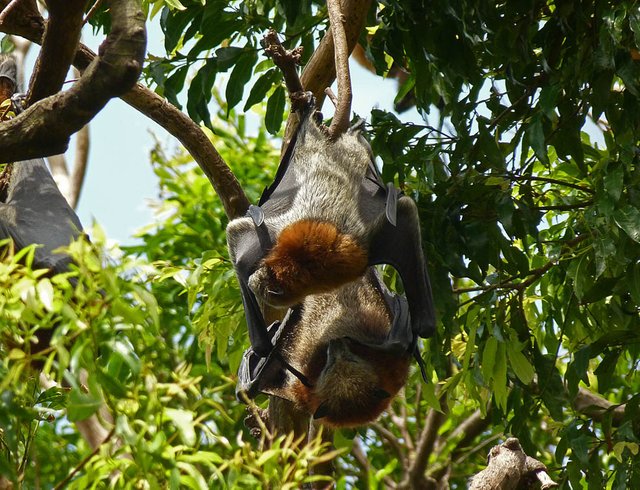
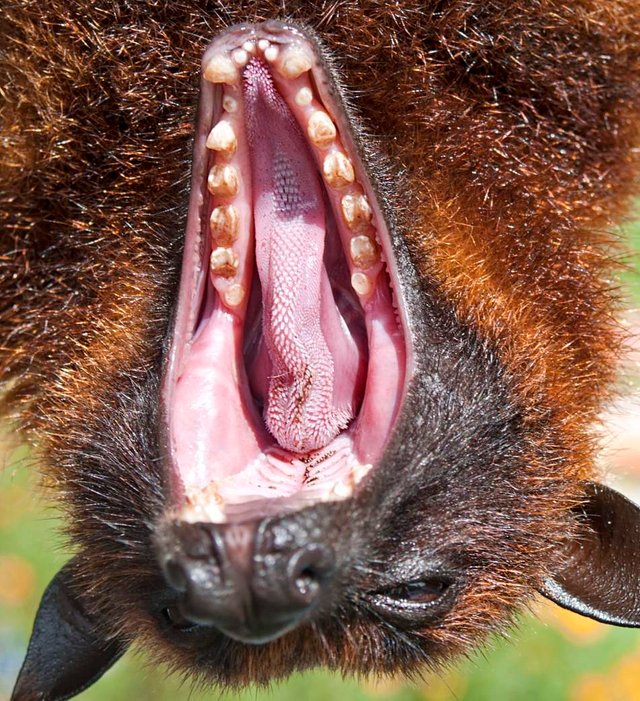
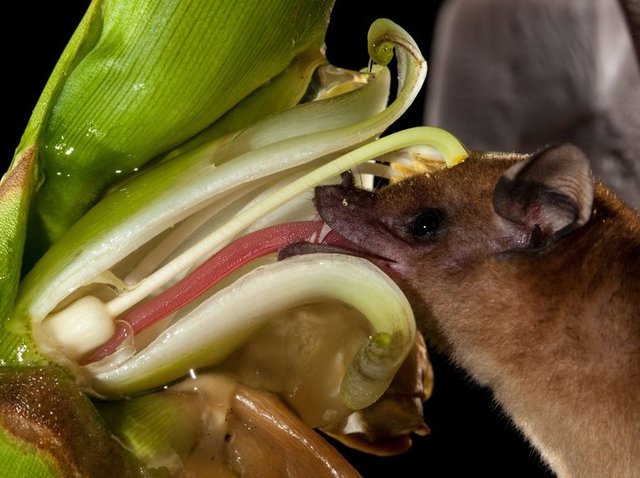
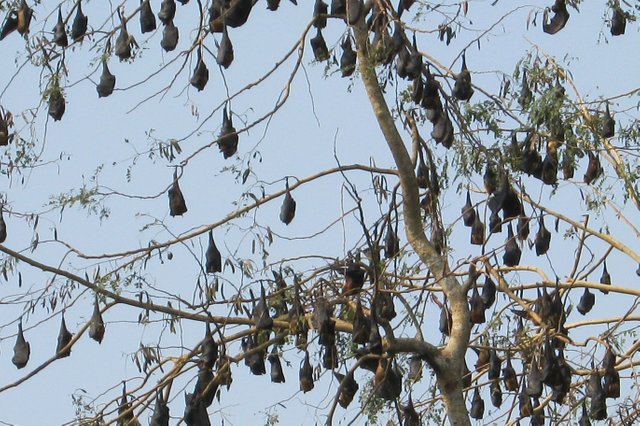
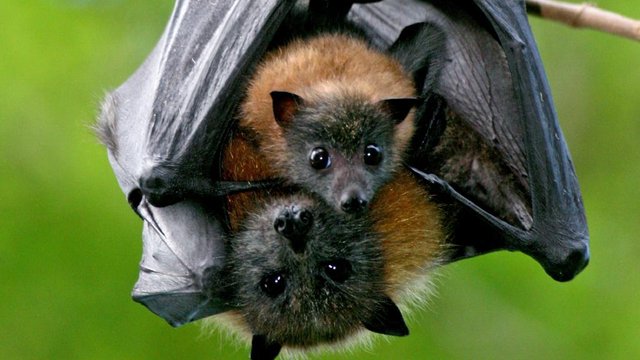
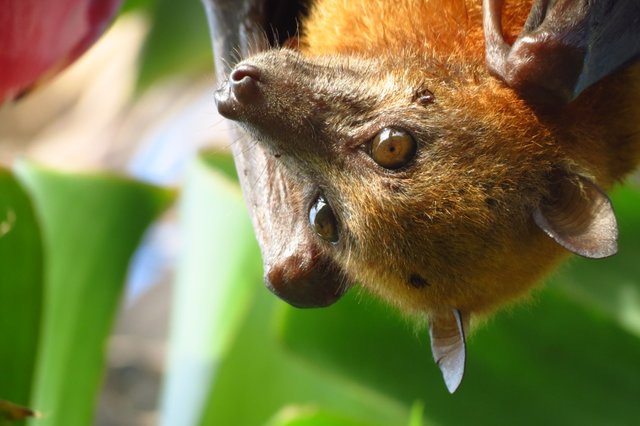
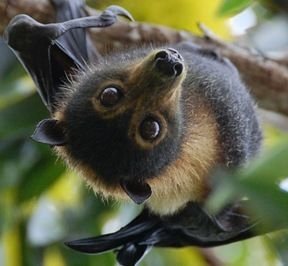

This is a test comment, notify @kryzsec on discord if there are any errors please.
Being A SteemStem Member
Megachiroptera and Microchiroptera are no longer valid taxonomic clades. Molecular evidence has restructured the order into two suborders, the Yinpterochiroptera and Yangochiroptera. Megabats now belong to the Yinpterochiroptera, accompanied by some of the bats formerly known as Microbats.
It is suspected that certain bats lost the ability to echo locate, as opposed to it evolving twice in separate lineages, but to the best of my knowledge, it is not fully resolved yet.
Great article, Bats are awesome. They can teach us a lot about healthy aging.
Reference for phylogeny: http://science.sciencemag.org/content/307/5709/580.long
Hi, thanks for your input. Having looked into what you have written about the taxonomy, I will of course add it in however, the terms ”Microbat” and ”Megabat” are still commonly used even by scientists themselves. For the sake of my whole post and the 4 and a half hours of time put into it, I will keep those terms in.
Depends on the field. Most Evolutionary Biologists working with bats, scorn at the use of these words (jokingly of course). I can imagine though, that in a discipline that does not require such phylogenetic correctness, field ecology perhaps, then using these terms is fine. Just like the term Reptile or Fish. It really depends on what type of scientist you talk to, I guess is my point.
But to say that these groups are valid clades, "there are two main suborders of Chiroptera, Megachiroptera and Microchiroptera" is incorrect. These are no longer suborders of bats. You could say, something like, "scientists divide bats into the large bats, Megachiroptera, and small, echolocating bats, Microchiroptera." There are exceptions to both, as you indicate in your blog, but it would suffice in defining them. I only point it out as your article is excellent and a good source of knowledge. No harm being precise.
No harm taken I appreciate your input, I will as a say add it in when I have the opportunity :)
I love flying foxes, so cute XD They're one of the things I spent most time studying when trying to work out how to attach wings to a human :) Didn't realise they could echolocate at all, but I've only ever seem them during the day so figured they just used their eyes. The idea that maybe they evolved away from it with the size is an interesting one. The smaller bats I'm familiar with gad about at night and hunt insects and small rodents so the echolocation is probably more useful there.
I want to be a megabat (for I prefer eating fruits than insects) and have megapowers like batman, with a batmobile, ha !ha! thank you AMAVI for this wonderful post, as usual !
Nice to read your post again, we were missing you